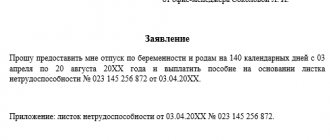There comes a time in the activities of every company when you want to understand the level of loyalty of employees, their level of satisfaction, how much they like their place of work and whether they feel that they will stay to work here for more than one year. This is important, since all over the world only 15% of employees are involved in work processes (according to the results of a Deloitte study), and some of the rest either regularly look at new vacancies and change jobs, or carry out duties through force, in fact not bringing any significant value to the company. benefits. You can find out this data from yourself using the method of measuring employee satisfaction (eNPS).
What is eNPS?
eNPS is an abbreviated name for the indicator (from the English Employee Net Promoter Score), which translates as “employee satisfaction index.” The main purpose of use is to help study the level of involvement and loyalty of staff.
It was developed back in the 1990s to get answers to one important question: “Would you recommend our company to your friends and relatives?” But then the request concerned the attitude of clients towards the organization. Having slightly changed the methodology, the indicator began to be used to calculate employee loyalty, first at Apple, and today throughout the world.
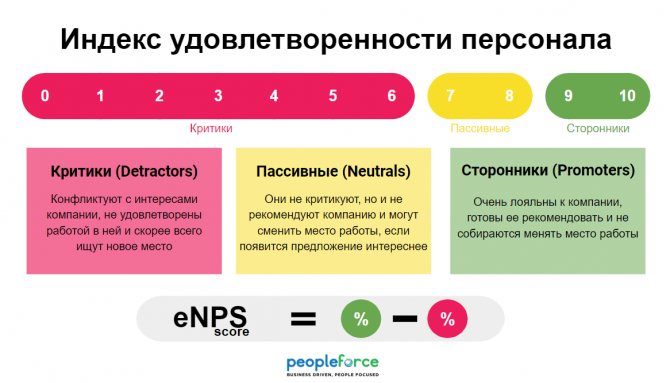
Sample questions for employee satisfaction surveys
Examples of questions for employee satisfaction surveys for the “Interaction with Management” group include the following:
Question on the significance of the category: “On a ten-point scale, determine how important it is for you to clearly set tasks on the part of your manager.”
Satisfaction question: “Determine the degree of validity of the statement “I am given specific tasks.”
For the category “Stability and Security Factor”:
Significance Question: “How often do you save for a rainy day?”
Satisfaction question: “To what percentage are you currently experiencing anxiety associated with the prospect of losing your job?”
Each employee is individual and can give the most unexpected answers. Therefore, for each question, you need to offer several possible options, one of which the employee must choose. This will allow you to calculate the results of the survey, bringing the average values to a common denominator. Answer options can be offered in the form of a percentage, numerical or verbal scale (excellent, good, bad, very bad).
Questions in the questionnaire should be placed in random order, alternating them from different categories. This will allow you to get the most frank and reliable answers. At the end of each block of mandatory questions with answers, it is advisable to leave space for comments at the initiative of employees, their expression of personal opinions without given options.
Why is this indicator needed and what does it affect?
eNPS is not only about staff and their loyalty, but also about business in general and its success. Therefore, this index is needed to find out:
- is the company ready to grow and develop further at this stage;
- how well the personnel policy is structured;
- Is the enterprise stable as a whole and from the point of view of labor management;
- Is there any kind of corporate culture at all and how well does it “work”;
- how many active “HR brand ambassadors” are there with a maximum level of loyalty and a desire to actively seek new opportunities for the development of the enterprise.
eNPS also allows you to predict various parameters related to personnel management. For example, what might the staff turnover be like in the next quarter or year, how many employees are ready to change jobs right now and under what conditions, are there those who would like to grow and develop only at their current place of work, etc.
Effective testing techniques
Aptitude tests
These are the same techniques that HR officers use. Usually they are given to candidates for a position, but no one bothers to test existing employees. Suddenly it turns out that the person occupies the wrong position! Aptitude tests help to unlock people's potential, catch the signs of professional burnout in the bud and take urgent action.
1. Certification. This technique is used in industrial enterprises, shops, and small, medium and large businesses. Its essence is simple: the employee is asked questions regarding professional activities . For example, for sales managers, certification questions may include the following:
- basic sales scripts;
- work with objections;
- techniques for working with cold clients;
- the difference between “you-statements” and “we-statements”;
- ability to conduct business negotiations;
- How to get a customer back if he hasn’t bought anything for a long time?
- and others.
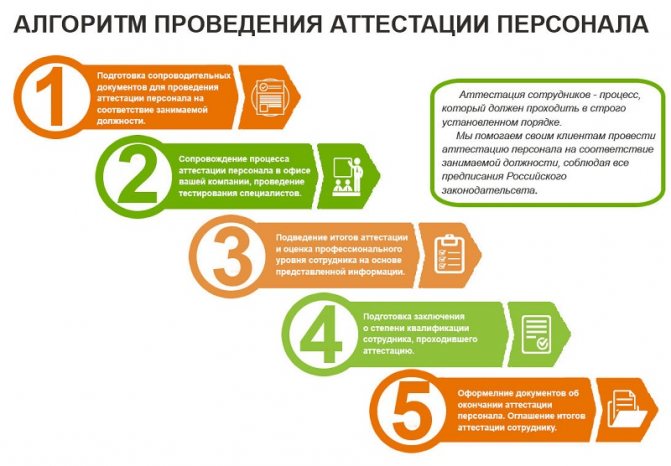
2. Tests. They are often combined with the theoretical part, forming a set of tasks. Roughly speaking, this is an exam on knowledge of your job responsibilities and the ability to perform them . Theory and practice. Like in a driving school. The same sales manager must simulate the situation of a cold call, persuade the client to place an order, sell him a couple of additional products, and work through all objections.
3. Tests for advanced training. It’s the same thing, only the questions are more intricate, and this technique is used when a person wants to climb the career ladder. You, as a leader, evaluate his knowledge and make a decision whether he is worthy or not.
4. Questionnaire tests. They help to better understand the aspirations of subordinates, their personal characteristics, and the level of professional burnout. Here are 2 well-known methods:
- Holland professional personality type test. An employee is given 42 pairs of professions, for example, auto mechanic and flight instructor, huntsman and interviewer, pastry chef and office clerk. He must choose which of these professions he likes best. The test helps to understand whether a person’s personality type matches the position they occupy. For example, if a person is prone to solitude, he is unlikely to be able to communicate with people often and a lot, it is better to make him do paperwork;
- Diagnosis of professional burnout. It consists of several dozen questions, the employee needs to answer “yes” or “no”. For example, is he as satisfied with his chosen profession as at the beginning of his career, is he tired of work problems, does he feel tension and anxiety, and so on. The test helps to understand whether there is a problem of burnout, at what stage it has reached and what can be done.
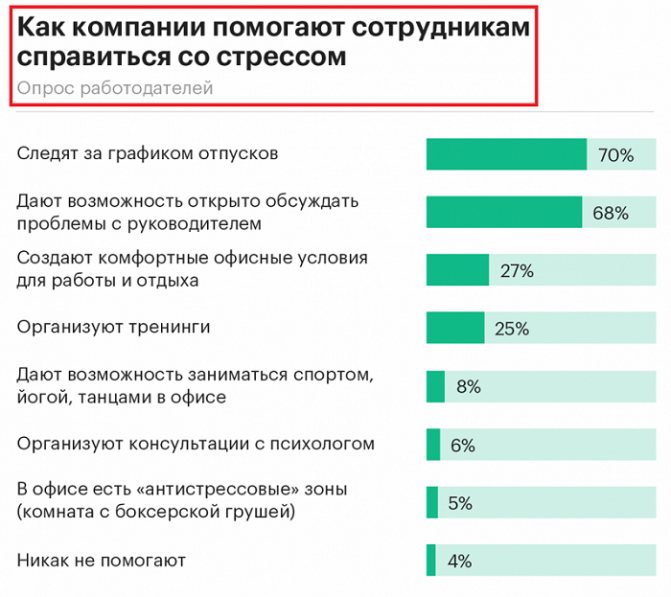
Advantages of aptitude tests:
- clearly shows whether a person is qualified for the position. Based on this knowledge, you can promote him or fire him;
- The manager himself can conduct testing if he is well versed in the subject.
Disadvantages of tests:
- It is quite difficult to carry out if a person works remotely;
- sometimes, in conditions of personnel shortage, the boss remains confused: it seems that the person does not correspond to the position, but he cannot be fired, and there is no one to replace him. Well, at least he’s warned, which means he’s armed!
Questionnaire tests for studying psychological qualities
A very wide range of methods; if you wish, you can test employees at least every day. Here are the most common tests on a variety of topics.
1. Diagnosis of self-efficacy by Maddux and Scheer. Personal effectiveness is a fashionable term. Every manager wants to see his employees improved and successful. As the name suggests, a person must himself determine the degree of personal effectiveness, talents and abilities, and most importantly, understand whether he is implementing them correctly.
23 statements are given, which the employee evaluates on an 11-point scale. For example, “one of my problems is putting things off until the last minute, so-called procrastination.” Or: “I rarely achieve my goals.” Or: “If I set a goal, I will go to it to the end, like a tank.” If I completely agree, I give 5+, if I absolutely do not agree, under any circumstances, I give 5-.
2. Diagnosis of Bassa-Darka aggression. An angry employee is like a time bomb, you don’t know when it will explode. Who will be hit by the blast wave - you, your colleagues, your innocent clients? Therefore, it is so important to identify manifestations of aggression and give the person a chance to cope with them.
The test allows you to identify different types of aggression: physical and verbal, direct and indirect, active and passive. If an employee insults colleagues, this is direct verbal aggression. If she sits in her corner and is angry at the whole wide world, she is indirect and passive. We have already written about toxic employees: most of them are aggressors. By the way, resentment and guilt are also aggression, only directed at oneself.
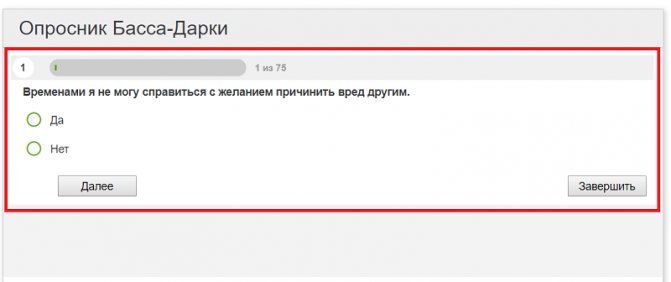
3. Guilford test for measuring social intelligence. Helps to find out how developed a person’s sense of team, mutual assistance, and communication ability is. This testing can be carried out with each employee, and then the results can be compared and conclusions drawn. It is especially useful to take the test for those who work directly with people: sellers, consultants, managers, even couriers. And it will be useful to you as a leader.
4. Determination of motivation for success by T. Ehlers. How committed is the employee to achieving goals, solving work problems, is he capable of showing creativity, or is he passively going with the flow? You will find out what each subordinate lacks and figure out how to motivate the employee.
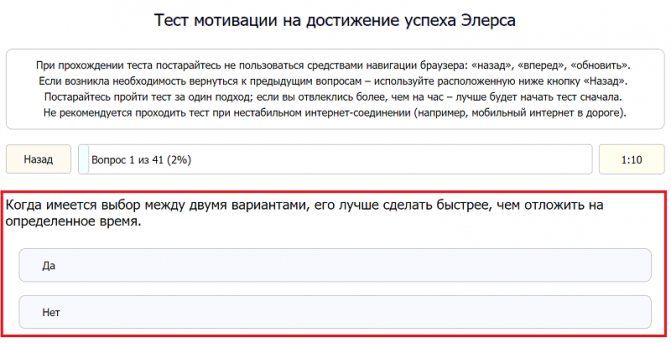
Advantages of questionnaires:
- if the psychological climate in the team is important to you, the test results will help you understand the personality traits of each employee;
- whoever owns the information owns the world. And in your hands - all the information about everyone, use it wisely!
Disadvantages of questionnaires:
- many tests are fairly standard. Perhaps employees have already taken them at their previous place of work or during training;
- you can predict the desired answers - write not what the person really thinks, but what the manager will like.
Projective tests
Here the results cannot be falsified: projective tests do not imply correct decisions at all . Actually, they don’t even contain questions: the subject is asked to draw a picture, choose one of the colors or pictures, look at the pictures and tell what he sees in them. This is pure psychology: only a specialist can interpret the test results. And even then, each of them will give his own point of view.
1. “House, tree, person.” The simplest technique that is given to children in elementary school. A person must draw a house, a tree and a person on a piece of paper (usually everyone draws themselves). There are no frames - everyone draws as they want. The only thing is to say that you need to draw all the details of each item in as much detail as possible.
There can be many interpretations. For example, if the house and tree are large, but the little man is barely visible, he probably feels lonely in the huge world. If the drawing is shifted to the upper part of the sheet, the person is prone to daydreaming, fantasizing, and does not stand firmly on the ground. The clarity of the lines, the excess or lack of detail, and even the weather reflected in the drawing are of great importance.

2. “Draw your work.” A similar test, only closer to business realities. Each person will draw his own: someone will stand surrounded by colleagues and partners, someone will work at the computer alone. Detailed drawing is very important here: for example, if all the figures are colored, but the person himself is black, this is a bad sign. If everyone is big, and he is small, that’s also no good, he feels like a small cog in the colossus of an online store.
3. Rorschach test. The famous inkblots in which people see dancing butterflies, bats, naked women and other unimaginable things. It is believed that the test helps to identify mental disorders, creativity and fears of the individual.

4. Luscher color test. Helps determine the current emotional state of a person - taken on different days, the test shows different results. The idea is simple: several cards depicting shades of flowers are given, and the person is asked to choose which one he likes best at the moment. From the remaining colors you need to choose one more - and so on until there is only one card left.
It would seem that you are simply choosing colors, but the test ultimately gives a surprisingly accurate assessment of your emotional state , describing what you are feeling right now. This is the power of projective techniques that look into your very soul, into your subconscious.
Advantages of projective tests:
- they are unusual and help to interest the subjects;
- give amazing results;
- they cannot be faked.
Disadvantages of projective techniques:
- Only a psychologist can decipher the results. Contact a specialist for help.
Business games
A relatively new type of testing, which is widely used in team building, team training and various trainings and master classes to unite employees. The method is based on modeling a specific situation from which the team must find a way out. You can clearly see how an employee will behave in a stressful situation, what qualities he will show, and how he will solve the problem. Remember the program “The Last Hero”? Something like this, just for fun.
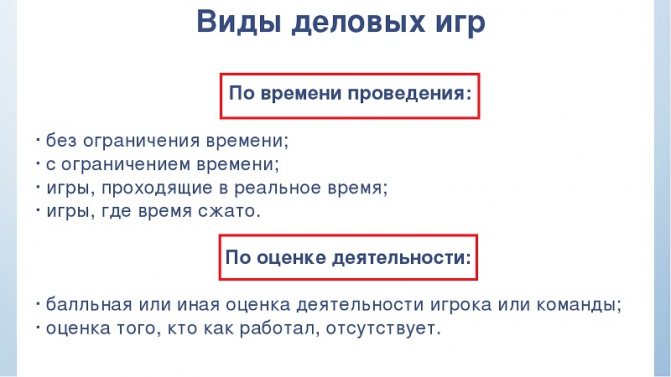
For example, the game “Desert Island”. Employees are divided into two groups. The first, according to legend, suffered a disaster and is now holed up on a desert island. They have supplies of food and drink, everything necessary for life, but no ship. And a volcano wakes up on the island - an eruption is coming soon. And then a liner sails to the island. The second group of employees is the crew of this aircraft. The former must by all means persuade the latter to take them on board. Some offer gifts and money, some offer services, some offer themselves as a good sailor. The manager observes and draws conclusions: will the first ones be able to sell themselves, remove objections, offer discounts and bonuses? Does the latter need much to make concessions? This is how human characters, personal and professional qualities are revealed.
Advantages of business games:
- work to unite the team;
- allow you to evaluate the contribution and participation of each employee;
- can be done independently, without resorting to the services of a coach or trainer.
Disadvantages of the method:
- Not everyone agrees to participate, you will have to persuade.
How to conduct a survey and calculate eNPS of staff?
Create an eNPS questionnaire
How to correctly compose a questionnaire to determine the level of staff satisfaction, what should be the methodology and wording of the questions? Special tools for online employee surveys will help with this, such as PeoplePulse , where prepared templates with questions are presented, and the results are easy to analyze thanks to automated reports for HR.
The questionnaire itself consists of two key questions:
- “On a scale of zero to ten, how likely are you to recommend our company as a place to work to a friend or colleague?”
- “Describe your solution in a few sentences” or “Why is that so?”

Conduct an online eNPS employee survey
Online employee survey platforms or your HRM system can be used to schedule survey submissions. This will allow you to obtain the company's eNPS indicator automatically and systematically. You just need to select the employees among whom the survey will be taken and send an invitation to participate to them by email. All responses will be anonymous, but this does not prevent you from segmenting them by department, division, gender, age, etc., in order to find the most “dissatisfied” segment.
Pay attention to the following functionality when choosing a platform for conducting eNPS surveys:
- the ability to choose a schedule for sending survey invitations;
- availability of templates;
- the ability to send reminders to those who did not complete the questionnaire;
- data synchronization with the HRM system;
- the opportunity to ask additional questions within the questionnaire;
- export of statistical data in the form of infographics and a full report.
An example of an invitation letter could be like this:
Don't forget to set up a survey reminder email.
Analyze answers
The results of a staff satisfaction survey are usually divided on a point scale into 3 categories of employees:
- Promoters or supporters (Promoters) - scores of 9-10 points.
- Skeptics or neutrals (Passively Satisfied) - scores of 7-8 points.
- Critics (Detractors) - ratings of 0-6 points.
Each of these groups is equally important and can help you understand different nuances of personnel policy. For example, promoters will tell you what exactly they like about the company and what reasons they have for recommending the place of work to friends. This information can be used to improve recruitment and retention processes. Skeptics will help you find out what exactly is stopping them from moving into the “Promoters” category and will be happy to recommend the company to their friends. Critics will show you what the problems are and what you need to work hard on. It is important to really listen to them and be prepared for specific proposals and ideas.
You might be interested in reading:
6 Tips to Increase Employee Satisfaction
Calculate eNPS
How to calculate staff eNPS? In PeoplePulse, this step is automated and does not need to be done, but we will consider it for a general understanding of the methodology.
The process is like this:
- We calculate the number of survey participants.
- We count the number of promoters and critics as a percentage.
- We calculate the final result using the formula “eNPS = % of supporters - % of critics.” The value should be a percentage.
If one of the employees never completed the survey, he automatically falls into the “Neutral” category, which does not affect the final result.
For better understanding, let's give an example. Let's say the company employs 75 people. Of these, 30 gave 9-10 points, 20 - 7-8 points, 15 - 0-6 points, and 5 did not vote. Then it will be like this: eNPS = 40% of supporters (30/75*100%) – 20% of critics (15/75*100%) = 20%
Analyze the final result
The staff loyalty index can range from -100% to 100%. If the figure is above -10%, then there is no reason to worry, but if the figure is lower, it is worth studying the issue of engagement and satisfaction better.
Do you want to conduct a survey and find out your employee engagement score? Download 120+ question ideas for your profile:
Example of questionnaires for assessing the motivation of employees and managers
QUESTIONNAIRE for assessing the motivation of specialists
You are invited to take part in a study, the purpose of which is to provide real assistance in organizing effective management activities and increasing the social protection of employees.
You are not required to indicate your last name or other information about yourself, but we count on your sincerity.
Please answer the questions in the questionnaire as detailed as possible.
1. Our company for me is ________________________________________________________________ _________________________________________________________________
2. For me, the main thing in our company is ___________________________________________________________________ ___________________________________________________________________
3. I work for the company because (check the 3 most important reasons):
- Here I can make money
- This is a temporary job for me
- There is an opportunity to realize yourself
- I can learn a lot
- I trust the company
- I feel the stability of the company
- Here I feel recognized and respected
- I can't do anything anymore
- I like the team
- I connect my future with this profession
Other_________________________________________________
4. Do you feel that wages depend on:
- Fulfillment of specified volumes
- Depending on your skill level
- From initiative and creativity at work
- On the level of compliance with disciplinary requirements
- From “Personal Devotion” to the Leader
- Other _________________________________________________
5. I am stimulated to work_______________________________________________________________
6. What slows me down at work is ________________________________________________________________
7. What, in your opinion, are the company’s main goals for the coming year (write at least three)? ___________________________________________________________________I don't know
8. Are there any among these goals that, in your opinion, are currently not being realized?
- No
- If yes, which ones:__________________________________________________________
9. If you or your work colleagues have misunderstandings or conflicts with managers, for what reasons?
- Management style, inattention to subordinates
- Incompetent management
- Indifferent attitude towards the needs of employees, towards improving their social and living conditions of work and rest
- Unreasonable changes in the functional responsibilities of employees and the assignment of additional
- Overtime, frequent overtime
- Frequent changes in department composition
- Unfair distribution of wages, bonuses
- Unsatisfactory distribution of vacations
- Unsatisfactory provision of equipment and materials
10. In my work, management notes and appreciates above all (list at least 3 points): _________________________________________________________
I think this is true, yes
How_________________________________________________________________
I think this is wrong, yes
How_________________________________________________________________
I would be pleased if also
noted______________________________________________________________
11. If you were asked to develop a staff motivation system in our company:
a) what criteria would you use to evaluate the performance of specialists of your level and qualifications: ___________________________________________________________________
b) What would you reward your employees for and how: ___________________________________________________________________
12. I consider the company’s competitive advantages…. ___________________________________________________________________
QUESTIONNAIRE for assessing the motivation of managers
You are invited to take part in a study, the purpose of which is to provide real assistance in organizing effective management activities and increasing the social protection of employees.
You are not required to indicate your last name or other information about yourself, but we count on your sincerity.
Please answer the questions provided in the survey in as much detail as possible.
1. How long have you been working for the Company? ________________________________
2. Pros and cons in the corporate culture of the Company? ___________________________________________________________________
3. What is the strongest motivation for you: moral, material, professional, career, social (by priority)? (Underline whatever applicable)
4. What difficulties do you encounter in communicating with subordinates? ___________________________________________________________________
5. For what qualities would you include an employee? ___________________________________________________________________
6. Is the training provided by the Company useful? What is its effectiveness? ___________________________________________________________________
7. What interferes with your work the most? ___________________________________________________________________
8. What is the most important thing to improve your work? ___________________________________________________________________
9. Do you consider your professional achievements in the Company: ___________________________________________________________________
10. What would you suggest to improve the management system within the Company (system of meetings, reporting, training, feedback)? ___________________________________________________________________
11. What should be changed (improved) in the information exchange system? ___________________________________________________________________
12. Do you have a need for training in personnel management issues_______________________________________________________________
13. Which motivation system will be most effective in your structural unit (KPIs, awards, bonuses, tuition, etc.)? ___________________________________________________________________
14. What problems do your subordinates have with discipline? ___________________________________________________________________
15. Do you consider being late for work a serious violation of labor discipline? ___________________________________________________________________
16. How do you control the labor discipline of your subordinates? ___________________________________________________________________
17. Are your subordinates able to keep secrets about their salary levels? ___________________________________________________________________
18. What is the staff turnover in your department (in the pre-crisis period), its main reasons? ___________________________________________________________________
19. For what positions do you have gaps in pay? ___________________________________________________________________
20. Is the current situation regarding remuneration of the Company’s employees effective? ___________________________________________________________________
21. Does your salary correspond to the market level? __________________________________________________________________
22. Do you consider it necessary to carry out salary indexation? __________________________________________________________________
23. What kind of help, in your opinion, does the staff expect from the HR department? __________________________________________________________________
24. Is the feedback from the Company’s management sufficient for you? __________________________________________________________________
25. How do you see your future career in the Company, what position would you like to occupy in 5 years?__________________________________________________________________
26. Does your potential match your responsibilities? __________________________________________________________________
27. What additional functions could you perform? __________________________________________________________________
28. What do you most respect and value the Company for?__________________________________________________________
29. What would you consider as a reward from the Company for your further development? __________________________________________________________________
30. What would you suggest in order to increase the loyalty or motivation of the Company’s personnel? __________________________________________________________________




